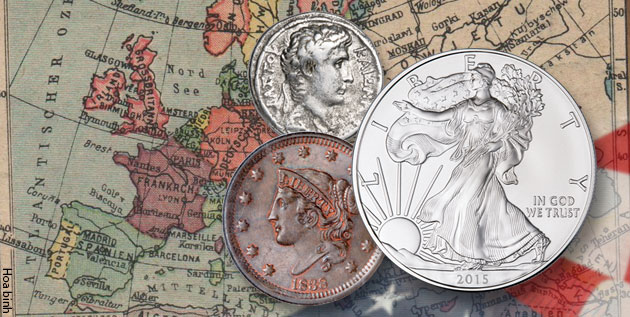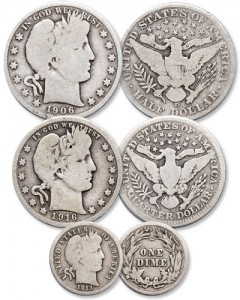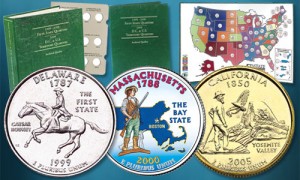History of Coin Collecting
This special contributor copy is by Joe O’Donnell, digital content producer of CoinWorld. See full bio below.

Coin collecting dates back centuries and is still popular today.
Digging deep, literally, to explore coin collecting before the United States ever struck its own coins, it’s possible to find reports of archaeological digs that have uncovered stashes of ancient coins in which every coin was unique. While there is no way to prove these were ancient coin collections, they certainly could have been. In any case, the history of coin collecting didn’t begin with American coins, but the history and evolution of collecting U.S. coins has been very well documented and provides plenty of information to discuss.
Early History of Coin Collecting
According to the Encyclopaedia Britannica, coin collecting in the 15th through 17th centuries has been documented from Europe to the New World. However, in those days, collecting coins was regarded mostly as a “hobby of kings” – or at least serious scholars. The reality is that the common people needed to use their coins to buy necessities. By the 17th century, scholars published treatises and studies of coins, but they were not meant for public consumption. Also, the study of coins in those days mostly focused on ancient coins – not those in common circulation.
The Dawn of Coin Collecting as a Popular Hobby

Collecting coins by type is one of the most popular ways to collect coins.
In the 1800s, coin collecting enjoyed a revolution. The scope of study broadened from ancient coins to world coins, including U.S. coins. Novices and non-scholars had introductory handbooks at their disposal. Collectable coins became accessible to people in the middle class, who did not have a “king’s fortune” to spend. Along with a wave of new numismatic societies in England and the U.S., the American Numismatic Society began in 1858 – the mid-1800s are generally considered the dawn of coin collecting as a popular hobby in the United States.
Coin collecting continued to evolve as a hobby and became popular in the middle of the 19th century. For example, many collectors of this time were interested in tracking every year in the large cent series after it was discontinued in 1857. Also, studies of coin auction catalogs from those days reveal that early Colonial coins and currency associated with the Founding Fathers excited early collectors. Even though popular coin collecting had progressed from only studying ancient and very valuable coins, collectors still tended to seek coins that were, at least, fairly old and historically notable.
One development in the late 1800s might surprise modern collectors. In 1893, George Heaton published “A Treatise on Coinage of the United States Branch Mints.” It wasn’t until the beginning of the 20th century that collectors really began taking note of mint marks.
Coin boards and folders came on the market in the 1930s. (Barber coins were the oldest series in circulation at this time, and coin boards are credited with the fact that so many good examples survive today.) According to Dr. Sol Taylor, these organizational tools made coin collecting even more accessible and drew more children to the hobby. Many of these children made coin collecting a lifelong hobby, and some passed on their passion and collections to their kids.
The Recent Evolution of Coin Collecting in the United States

The U.S. Mint estimated that 147 million people collected the 50 state quarters series.
There weren’t official services to grade and authenticate coins until the 1980s. Even though it was possible to collect and even develop grading systems without these services, they helped make the market more stable. These services can give buyers more trust in the market because a credible third party has verified that the purchase is what the seller claims.
It is also worth noting how much modern coins have caught the popular imagination today. According to the U.S. Mint, the 50 State Quarters Program is the most successful coin program in the history of the country. New bullion coins, such as U.S. Silver Eagles and Gold Eagles, also continue to attract attention.
Nothing has been lost on numismatics over time. People still covet and study rare, ancient and very valuable coins. However, affordable and new coins can also excite collectors. The modern hobby has evolved to become more accessible, popular and trustworthy. Even in this digital age when people spend fewer coins than they used to, collecting coins remains popular.




Congratulations for your blog! We will follow you on social networks! Greetings from Barcelona. http://www.vaciart.com
Thanks for writing from Spain, and for following our blog! Happy collecting from all of us at LCC.
Big fan here from Wilmington, NC.
Tom
Hi Tom! Thanks for stopping by our blog. Come back again soon!
Beginners in coin collecting
Good for you! We think coin collecting is the BEST hobby! You’re going to love it. Let us know if you have any questions or need any help with your collection. We’ll be happy to assist you! Good luck and enjoy your new hobby! -Rick
It’s nice that you talked about how collectors can also get excited over affordable and new coins. I’ve always been quite interested in coins, so I am thinking of starting a coin collection. So first off, I am going to check out a rare coin dealer later.
Great to hear Luke! Coin Collecting is a fun, interesting & rewarding hobby! You’ll love it! To learn more about the hobby, check out our Learn Center . It has a lot of great information that’ll help you on your way to building your collection. If you have any questions or need assistance, don’t hesitate to contact us. We’ll be happy to help. Enjoy your holidays!